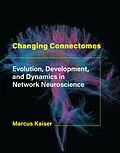An up-to-date overview of the field of connectomics, introducing concepts and mechanisms underlying brain network change at different stages.
The human brain undergoes massive changes during its development, from early childhood and the teenage years to adulthood and old age. Across a wide range of species, from C. elegans and fruit flies to mice, monkeys, and humans, information about brain connectivity (connectomes) at different stages is now becoming available. New approaches in network neuroscience can be used to analyze the topological, spatial, and dynamical organization of such connectomes. In Changing Connectomes, Marcus Kaiser provides an up-to-date overview of the field of connectomics and introduces concepts and mechanisms underlying brain network changes during evolution and development.
Autorentext
Marcus Kaiser is Professor of Neuroinformatics in the School of Computing at Newcastle University and Visiting Professor at Shanghai Jiao Tong University. He is a Fellow of the Royal Society of Biology and is Chair of Neuroinformatics UK.
Inhalt
Preface
1. Introduction
Part I. Connectome Structure
2. Features of Complex Networks
3. Evolution of Neural Systems
4. Organization of Neural Systems
Part II. Connectome Maturation
5. Brain Development
6. Layer Formation
7. Axonal Growth
8. Formation of Hubs
9. Module Formation
10. Cortical Folding
Part III. Connectome Changes
11. Development and Ageing
12. Neurodevelopmental Disorders
13. Neurodegenerative Disorders
14. Recovery from Injury
15. Brain Stimulation Effects
Glossary
References
